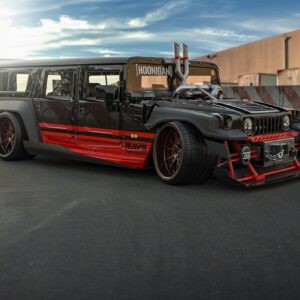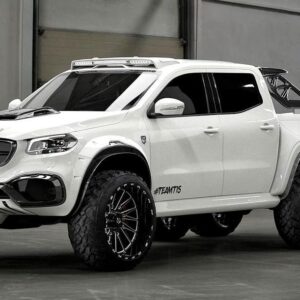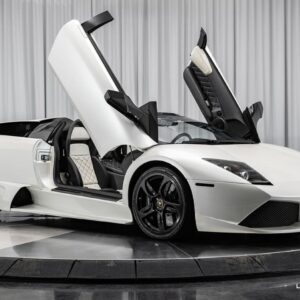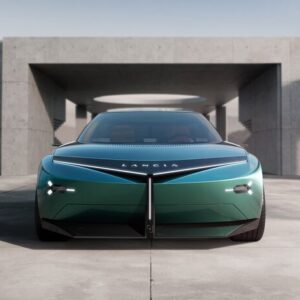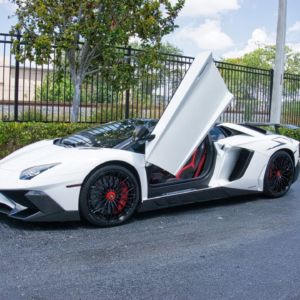Expensive but already sold out, not very comfortable and thoroughly impractical it might well be, but in the right circumstances the 911 Dakar is fantastic, even if it is ultimately just a toy for the mega-rich. It gives the road-going 911 a dimension to its personality that we’ve not yet experienced, with genuinely surprising off-road ability that puts fun at the core of the driving experience; finding the location to experience this might be the issue for some owners. However, if we could afford one (and get hold of one), we’d do so in a heartbeat.

The 911 Dakar is a Marmite kind of car. It has no rear seats, it rides 50mm higher than normal and looks a bit gangly in the metal. It weighs a bit more than it probably should, because it’s been beefed up to deal with the sort of terrain it may never encounter. And at £173,000, it’s heinously expensive, even for a Porsche.

And yet there’s something about it that just works somehow, and that appeals to your innermost child, perhaps because it seems more light-hearted than your average Porsche 911. Although it’s a seriously capable car beneath its Tonka Toy exterior, it looks endearingly chirpy for a model that costs as much as a semi-detached house. It looks like it should be a right laugh to drive, and as we discovered in the Sahara recently, that very much turns out to be true.

How so? Because once you strip away its Action Man suit, the Dakar is actually a 911 GTS beneath the skin, which means it is still a very fast and very capable car indeed. It’s powered by a 473bhp 3.0-litre twin-turbo flat-six engine that can fire it from 0-62mph in a claimed 3.4 seconds.
Its eight-speed dual-clutch automatic PDK gearbox is exactly the same transmission as the one you get in a 911 GTS, as are its brakes, its four-wheel steering system and its differentials, because inevitably the 911 Dakar is four-wheel drive.

You see, Porsche is no stranger to off-road versions of its iconic 911, with the firm previously modifying its bread-and-butter sports car for off-road competition. That’s where this car gets its name, because some of its ancestors competed in the famous Paris-Dakar rally raid.

The 911 Dakar you see here is wearing a special heritage livery. This particular white, black and blue colour scheme is inspired by the modified 911 S the factory entered in the 1971 running of the 3,000-mile-plus East African Safari Rally. The complete wrap will set you back 4,165 Euros (UK pricing hasn’t been revealed yet).

Despite the stickers and graphics, it still shares a lot with the GTS. Where it differs is in its suspension, tyres, ride height and certain bits of bodywork, much of which has been re-engineered to withstand the onslaught of rough off-road terrain. So the Dakar’s springs are longer and softer, its dampers tougher, the tyres are specially developed all-terrain semi-knobblies by Pirelli, and the sills are made of metal to make them more thumpable.
The entire underside has been beefed up, with protective panels fitted front to back to stop rocks from entering its gizzards. Plus you can raise the ride height by a further 30mm electronically if serious ground clearance is needed. The extra ride height is available at up to 105mph, giving you some insight into exactly how Porsche feels this car might be driven by its owners.
There are two new drive modes for the Porsche Active Suspension Management system, labelled Rallye and Offroad. Engage the first and everything from the throttle to the diffs to the traction control goes into maximum attack; engage the latter and the responses become softer, gentler, calmer – to provide maximum cross-country ability but at a much smoother pace.
And it works. We drove the Dakar for two days across some seriously wild terrain in the Sahara Desert, and not once did it get stuck. Porsche claims the Dakar can go pretty much anywhere that a Cayenne can, only a lot faster while providing a lot more fun for whoever is behind the wheel. The manufacturer isn’t fibbing.
In Rallye mode the Dakar is an absolute scream to go dune driving in, feeling quite a lot like a full-blown rally car if you give it some beans – not least in part thanks to the rear bias it dials into the all-wheel drive system. In Offroad mode this sports car will climb across obstacles, go places and do things that even a Range Rover Sport driver might not fancy much. It really is unbelievably capable off road.
Which makes it even more amazing to discover that, back on normal roads, it feels and drives much like a regular 911. A pretty fast 911 at that, even if the knobbly tyres are a bit noisier than you’d expect and the suspension fractionally less precise, which is to be expected. The point is, it drives better than it has any right to back on regular tarmac, considering how potent it is on the rough stuff. As a combination, this gives the Dakar a range of appeal that is unique as far as we’re aware.
But what about the downsides? Well, there’s the lack of rear seats, so practicality is a little limited by conventional 911 standards. The fuel tank is also on the small side, at 67 litres, so range could be a factor.
The Dakar’s bucket seats are excellent when you’re going for it but uncomfortable when you’re not, and the cabin feels a bit predictable from behind the wheel, merely because the instruments and dash are much like every other 911’s. With a facelift of the regular car on the way, though, it’s likely this will be addressed soon.
And although it’s crazily expensive at £173,000 before options, you can’t buy one now, because all 2,500 examples are sold out, meaning its already-rich owners will likely get richer still in the long run, should they come to shift them on.
But purely as a car to drive and to appreciate, the Dakar is sensational. In many ways it’s one of the most intriguing 911s there has ever been, which isn’t bad when they’ve been churning them out now for 60 years and counting.
| Model: | Porsche 911 Dakar |
| Price: | £173,000 |
| Engine: | 3.0-litre flat-six turbo petrol |
| Power/torque: | 473bhp/570Nm |
| Transmission: | Eight-speed automatic, four-wheel drive |
| 0-62mph: | 3.4 seconds |
| Top speed: | 149mph |
| Economy: | 26.9mpg |
| CO2: | 239g/km |
| On sale: | Sold out |
